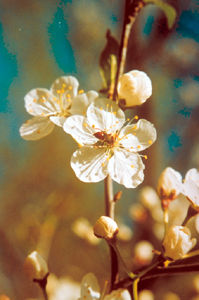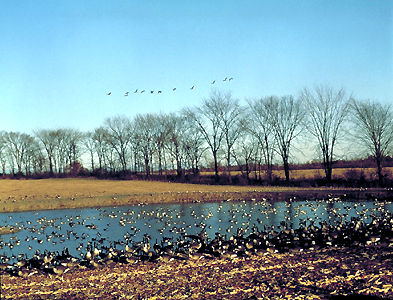Browse "Animals"
-
Article
Beetle
Beetles are an extremely diverse group of insects, which together make up the order Coleoptera (from Greek koleos, meaning, “sheath,” and ptera, “wings”). So named for their hardened forewings, which conceal a second pair of flight wings, beetles have the greatest number of known species of any comparable group of living things. There are an estimated 380,000 described beetle species worldwide, representing about 40 per cent of the world’s known insects. Beetles occupy nearly every available terrestrial and freshwater habitat, having evolved to fulfill more ecological roles than probably any other group of organisms. As such, beetles are found all over the world. In Canada, over 8,150 species are known, representing 121 of the world’s 176 families of beetles. Familiar beetles include lady beetles, fireflies, scarabs, weevils, tiger, ground, blister and leaf beetles.
"https://d2ttikhf7xbzbs.cloudfront.net/media/media/363d9809-9283-479b-b225-1f7857211985.jpg" // resources/views/front/categories/view.blade.php
https://d2ttikhf7xbzbs.cloudfront.net/media/media/363d9809-9283-479b-b225-1f7857211985.jpg
-
Article
Beluga Whale
The beluga, or white whale, is a type of toothed whale found in Canada’s Arctic, Hudson Bay and St. Lawrence estuary.
"https://d2ttikhf7xbzbs.cloudfront.net/media/media/36db2274-75da-45e8-8119-a03c7203ce5c.jpg" // resources/views/front/categories/view.blade.php
https://d2ttikhf7xbzbs.cloudfront.net/media/media/36db2274-75da-45e8-8119-a03c7203ce5c.jpg
-
Article
Beneficial Insect
Most insects are beneficial, playing many ecological roles. Less than 1% are pests. They are the principal food of many birds and reptiles, and the survival of insect-pollinated plants depends on them.
"https://d2ttikhf7xbzbs.cloudfront.net/media/media/bdc4d290-63b3-44ee-a1c0-cdd4bd1288a8.jpg" // resources/views/front/categories/view.blade.php
https://d2ttikhf7xbzbs.cloudfront.net/media/media/bdc4d290-63b3-44ee-a1c0-cdd4bd1288a8.jpg
-
"https://development.thecanadianencyclopedia.ca/images/tce_placeholder.jpg?v=e9dca980c9bdb3aa11e832e7ea94f5d9" // resources/views/front/categories/view.blade.php
https://development.thecanadianencyclopedia.ca/images/tce_placeholder.jpg?v=e9dca980c9bdb3aa11e832e7ea94f5d9
-
Article
Biology
Biological studies of individuals and groups of organisms can occur at various levels (eg, molecular, cellular, anatomical, functional, behavioural, ecological and evolutionary).
"https://d2ttikhf7xbzbs.cloudfront.net/media/media/8ff204ea-7793-42b9-9f34-39964ccf0d12.jpg" // resources/views/front/categories/view.blade.php
https://d2ttikhf7xbzbs.cloudfront.net/media/media/8ff204ea-7793-42b9-9f34-39964ccf0d12.jpg
-
Article
Bird
A Bird is a member of a unique group of vertebrates, Class Aves. The fossil record, comparative anatomy and embryology indicate that Birds have a common ancestry with Reptiles and Dinosaurs.
"https://d2ttikhf7xbzbs.cloudfront.net/media/media/12e86d45-e381-4590-9fb6-2fbdd5de9e4e.jpg" // resources/views/front/categories/view.blade.php
https://d2ttikhf7xbzbs.cloudfront.net/media/media/12e86d45-e381-4590-9fb6-2fbdd5de9e4e.jpg
-
Article
Bird Classification and Evolution
Archaeopteryx, the oldest bird yet discovered, is known from several fossils recovered from fine slate deposits in Germany. This magpie-size animal lived in a tropical environment about 150 million years ago.
"https://d2ttikhf7xbzbs.cloudfront.net/media/media/c7e04f90-d96a-4dab-87a6-61ec97d4f018.jpg" // resources/views/front/categories/view.blade.php
https://d2ttikhf7xbzbs.cloudfront.net/media/media/c7e04f90-d96a-4dab-87a6-61ec97d4f018.jpg
-
Article
Bird Distribution and Habitat
Animals' lives are circumscribed by 2 imperatives: finding food for survival, growth and reproduction and avoiding becoming prey before reproducing. For an animal to occupy a habitat, it must be able to survive and reproduce within it. Birds have evolved many ways of meeting these challenges.
"https://d2ttikhf7xbzbs.cloudfront.net/media/media/c06fb4d9-165b-4774-b1d1-0a3373197d75.jpg" // resources/views/front/categories/view.blade.php
https://d2ttikhf7xbzbs.cloudfront.net/media/media/c06fb4d9-165b-4774-b1d1-0a3373197d75.jpg
-
Article
Bird Feathers
Feathers are only found on birds. They probably evolved as a temperature-control device from scales, much like those of modern reptiles.
"https://d2ttikhf7xbzbs.cloudfront.net/media/media/bd6ae83e-381f-4d09-9c25-3b2420244b9d.jpg" // resources/views/front/categories/view.blade.php
https://d2ttikhf7xbzbs.cloudfront.net/media/media/bd6ae83e-381f-4d09-9c25-3b2420244b9d.jpg
-
Article
Bird Flight
Wing evolution has been affected by the habitats to which birds have adapted (e.g. the open ocean, cliff tops or the closed environment of forests) and by the need to reduce drag, or air resistance.
"https://d2ttikhf7xbzbs.cloudfront.net/media/media/bc3b402e-0e9b-4e6e-964d-57f8aa782fb7.jpg" // resources/views/front/categories/view.blade.php
https://d2ttikhf7xbzbs.cloudfront.net/media/media/bc3b402e-0e9b-4e6e-964d-57f8aa782fb7.jpg
-
Article
Bird Sanctuaries and Reserves
Protection may be achieved by various means, including land-use zoning, long-term agreements with landowners and outright acquisition of land by wildlife agencies. Protected land areas may be designated as national wildlife areas, conservation areas, game reserves, etc.
"https://d2ttikhf7xbzbs.cloudfront.net/media/media/c69a8239-200e-4a58-9eac-691b6eb64f68.jpg" // resources/views/front/categories/view.blade.php
https://d2ttikhf7xbzbs.cloudfront.net/media/media/c69a8239-200e-4a58-9eac-691b6eb64f68.jpg
-
Article
Bird Watching
Bird watching is the field observation of birds. The popularity of bird watching has burgeoned, especially since WWII, assisted by increased leisure time, a rich literature of books and periodicals, more organizations and better educational, communication and travel facilities.
"https://d2ttikhf7xbzbs.cloudfront.net/media/media/70676950-d173-4bb5-8a43-d919d9483bd3.jpg" // resources/views/front/categories/view.blade.php
https://d2ttikhf7xbzbs.cloudfront.net/media/media/70676950-d173-4bb5-8a43-d919d9483bd3.jpg
-
Article
Birds of Prey
Birds of prey could be defined as birds that prey on other living animals; however, the term is usually reserved for species with hooked bills and large, strong, sharp talons.
"https://d2ttikhf7xbzbs.cloudfront.net/media/media/3b8732d2-85fe-4a68-a92b-a6b0f4e83560.jpg" // resources/views/front/categories/view.blade.php
https://d2ttikhf7xbzbs.cloudfront.net/media/media/3b8732d2-85fe-4a68-a92b-a6b0f4e83560.jpg
-
Article
Bison
Bison are large, even-toed hoofed mammals of the family Bovidae. Two subspecies of bison exist in North America: the plains bison (Bison bison bison) and the wood bison (Bison bison athabascae). Historically, the plains bison lived primarily in the Great Plains of central North America, while the wood bison lived further north, from Alaska into the Yukon and the Northwest Territories, and in the northern portions of British Columbia, Alberta and Saskatchewan. Prior to the arrival of Europeans, it’s estimated that plains bison numbered 30 million and wood bison 170,000. Various aspects of European colonization led to the rapid depopulation of North America’s bison. By the late 1800s, plains bison no longer existed in Canada, and wood bison numbered about 200. Conservation efforts in both Canada and the United States mean that today, North America’s plains bison population fluctuates between 350,000 and 400,000, and wood bison between 5,000 and 7,000.
"https://d2ttikhf7xbzbs.cloudfront.net/media/media/d42d3205-9d81-47d6-b98f-c935a91aebea.jpg" // resources/views/front/categories/view.blade.php
https://d2ttikhf7xbzbs.cloudfront.net/media/media/d42d3205-9d81-47d6-b98f-c935a91aebea.jpg
-
Macleans
Bison Back from Brink of Extinction
This article was originally published in Maclean’s magazine on February 16, 2004. Partner content is not updated. AS MUCH as a 400-lb. animal can be said to frolic, that's what 50 BISON calves have been doing since they arrived on the rolling flatlands of southwestern Saskatchewan in mid-December.
"https://development.thecanadianencyclopedia.ca/images/tce_placeholder.jpg?v=e9dca980c9bdb3aa11e832e7ea94f5d9" // resources/views/front/categories/view.blade.php
https://development.thecanadianencyclopedia.ca/images/tce_placeholder.jpg?v=e9dca980c9bdb3aa11e832e7ea94f5d9
